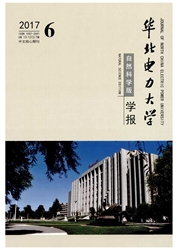

 中文摘要:
中文摘要:
在建立[火用]传递唯象方程的基础上,讨论了[火用]传递过程动力、阻力、速率之间的关系,指出[火用]传递研究的核心应是确定[火用]传递系数,分析其影响因素,以便控制和调节[火用]传递过程。运用量纲对比的方法推导了热量、动量及质量的[火用]传递系数,分析表明影响烟传递系数的宏观因素包括其对应的能量传递系数、过程不可逆性及其他非自身强度场。[火用]传递系数的分子运动理论研究,从微观层面揭示其内在机制,即[火用]传递系数本质上与分子本身的物理性质及表征分子运动剧烈程度的温度有关。
 英文摘要:
英文摘要:
On the basis of establishing exergy transfer phenomenological equation, the relation of dynamic, resistance and tale of exergy transfer process is discussed. It is pointed out that the key of exergy transfer study should he determining exergy transfer coefficient and analyzing its influence factors, so as to control and regulate exergy transfer process. Using dimension comparison method the exergy transfer coefficient of heat, momentum and quality is derived. The analysis shows that macroscopic factors of influencing exergy transfer coefficient include its corresponding energy transfer coefficient, process irreversibility and other non itself intensity field. The molecular motion theory study of exergy transfer coefficient reveals its internal mechanism from micro level, namely exergy transfer coefficient is essentially related to molecular itself physical properties and the temperature embodying molecular motion violent degree.
 同期刊论文项目
同期刊论文项目
 同项目期刊论文
同项目期刊论文
 期刊信息
期刊信息
